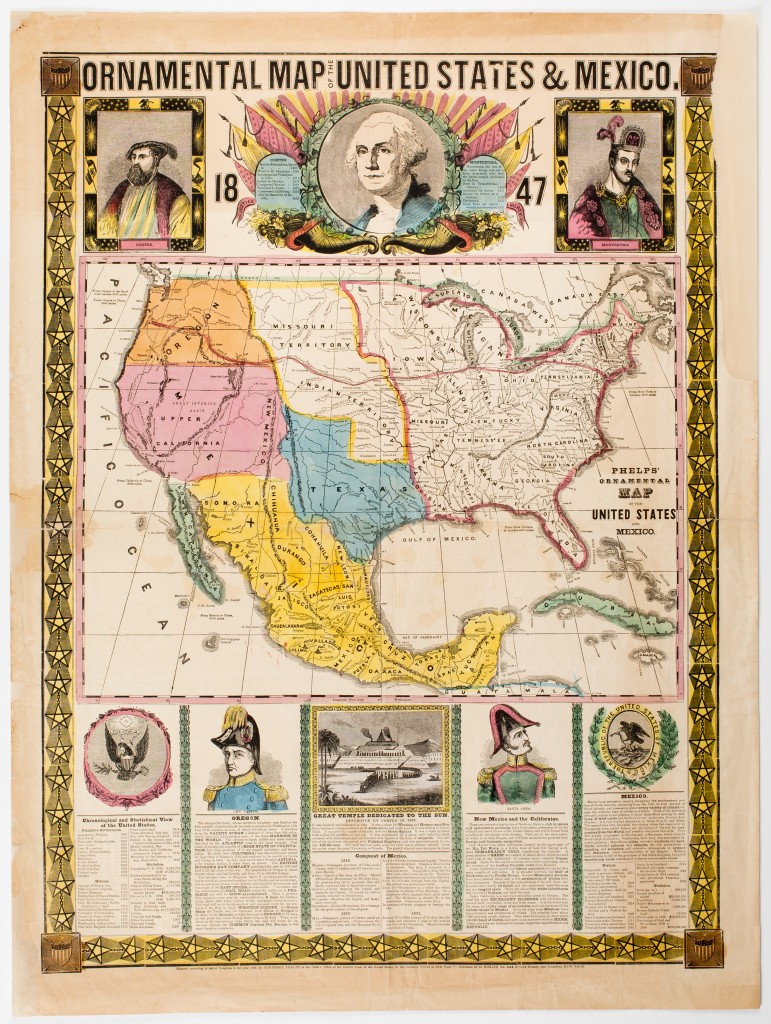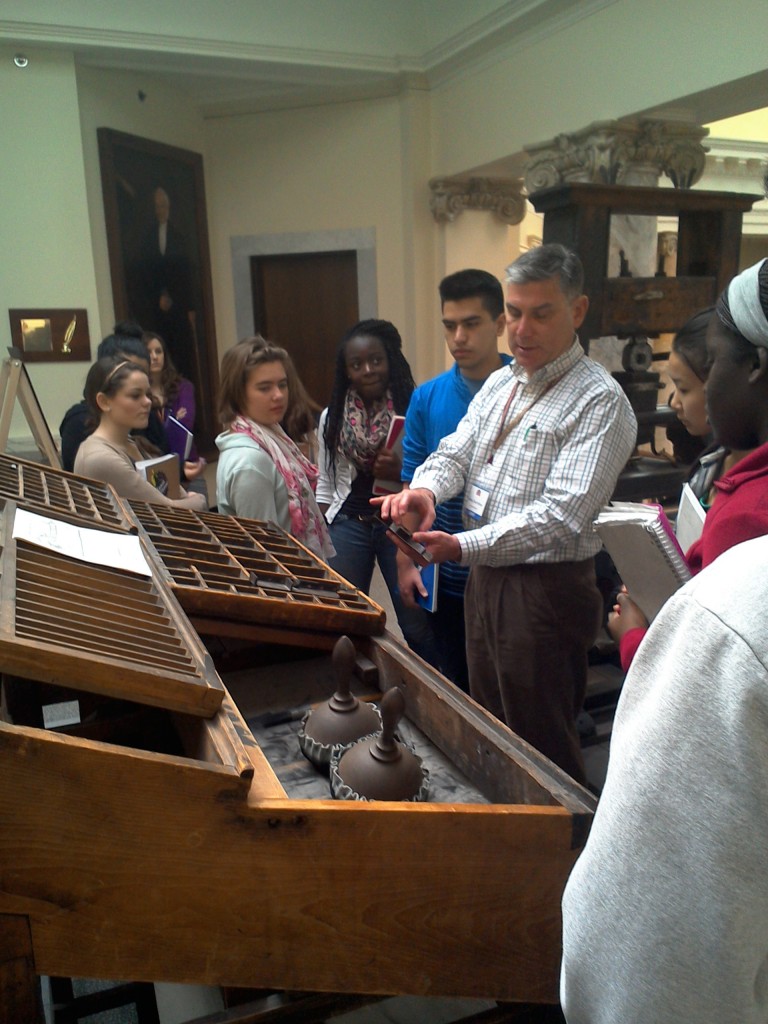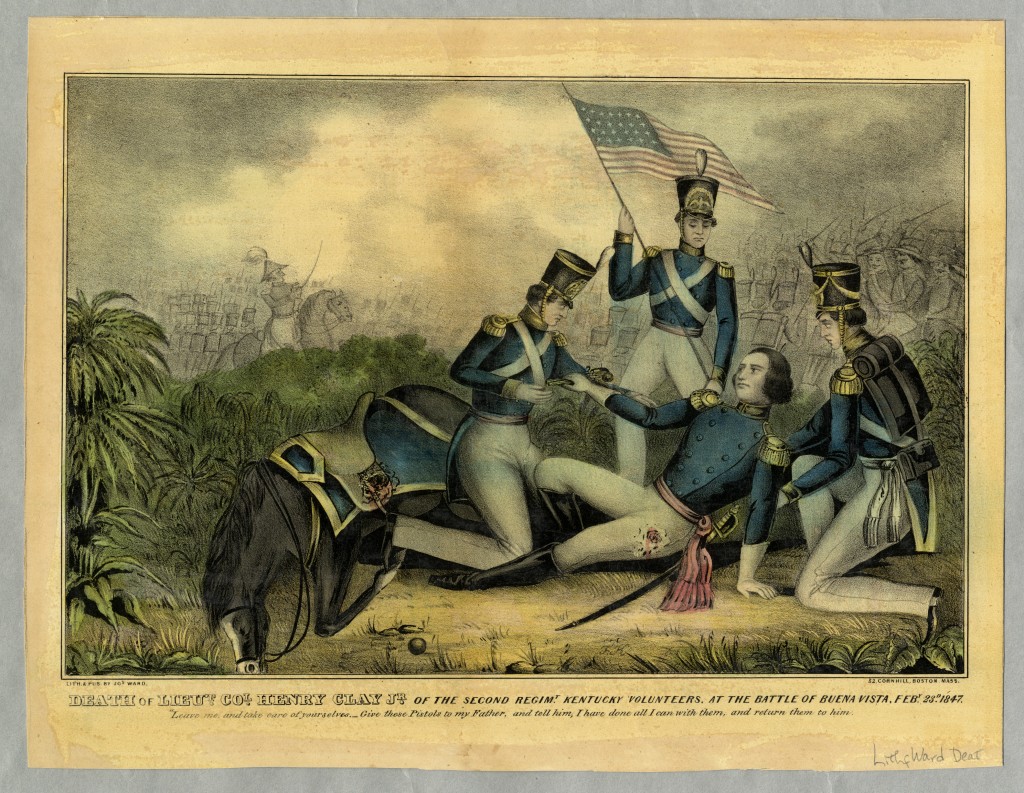Josiah Burden is a history teacher at Worcester’s South High Community School. Over the course of several years, he was able to take part in many workshops at AAS through a federally-funded Teaching American History grant awarded to AAS and the Worcester Public Schools. The experience led him to bring two of his own U.S. history classes on a field trip to AAS.

In April, I brought two U.S. History classes to AAS for a tour and workshop. My experience with the AAS as a teacher has been great. Through the workshops of the Teaching American History grant, and a handful of Saturday events, I have been working with the collection, and it seemed clear to me that my students had to come here.
I planned a field trip where my class would work with artifacts pertinent to the War with Mexico. A handful of visits to the reading room yielded several dozen fantastic items: political cartoons, campaign broadsides, lithographs, newspapers, and the like. There’s just so much to choose from. The real challenge was narrowing it down to a dozen or so pieces that told a somewhat balanced story.

With the help of the AAS outreach staff, we crafted an experience for students that would be both memorable and enlightening. I had tried to explain to the students beforehand the enormity of the library and the, well, coolness of the collection, but it’s really best understood in person. As impressive as the reading room is, it is the tip of the iceberg. As our tour wandered through the library, around the Isaiah Thomas press, and into the stacks, they began to get it.
In the council room, my students worked together and individually to understand what each of the items meant, and how they could contribute to their understanding. It was great to see them interacting with the collection, gingerly turning the pages of a 150-year-old newspaper, disagreeing with each other over the meaning of a campaign poster produced in 1848. In what was probably the most interesting turn of events, one girl compared the depiction of the death of Henry Clay Jr. (see below) to the crucifixion of the Christ, using her art background to help explain the use of space and the position of the figures, the angle of the flag, to make a pretty compelling argument that the lithograph was not just a scene from the war but more of a commentary on the morality of the conflict that Clay’s father fought so intensely to prevent.

The kids enjoyed the day the spent at the American Antiquarian Society. Several of them indicated that they never realized we had such an incredible wealth of important history right here in Worcester. All of them left with a better understanding of their place in the world. It was great to see them experiencing history through real objects; it’s an opportunity that students in our area are truly fortunate to have.
